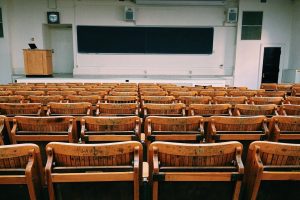
We are a reader-supported education publication. When you buy through links on our site, we may earn an affiliate commission to help us keep providing content.
The U.S. education system is under a microscope. In the past year, major shifts occurred due to the COVID-19 pandemic. Some would argue the pandemic exposed underlying issues in all industries nationwide. Unfortunately, the education system was one of these industries.
As society progresses, our systems must adapt to the new standards we create. Leaders become better equipped when they acknowledge the system’s shortcomings. Only after that are they able to implement changes.
Many issues regarding education in the U.S. are primarily dependent on state policies. Politicians spend time working on education reform plans to enhance learning opportunities for the students they serve.
However, there are deeply rooted issues that prevent these reforms from taking place. Debates over which issues to prioritize and funding solutions are common reasons why reform gets put on pause, allowing these issues to perpetuate.
Let’s take a look at some of the issues administrators, educators, students, and parents are experiencing.
1. Classroom Size
It’s common for class sizes to fluctuate depending on population growth in a given area. However, it presents a challenge for school administration to maintain a fair student-to-teacher ratio.
Because schools are limited in their annual budgets, hiring more teachers may not be a feasible option. This means more students are funneled into classrooms, making it difficult for educators to get one-on-one time with students.
There’s controversy over the idea that class size impacts a student’s ability to learn. Some studies take the position that class size does not have much impact, while some stress that large class sizes have adverse effects on learning.
More research regarding the topic of class size would benefit educators and administrators.
2. Lack of Funding
There’s no simple answer to where schools across the country receive their funding. Whether it’s from local taxes or state funding, public school districts are typically underfunded, leading to a reduction in student achievement.
Funding is an issue that’s long plagued the education system — without proper funding, how can any industry succeed?
Low school budgets force educators to come up with creative ways to educate their students using minimal resources. Schools with higher budgets tend to have students that perform better academically. Educators must have what they need to engage with their classes and provide the best opportunities to learn.
3. More Remote Learning
The adoption of remote learning was necessary for the 2020-2021 school year. It’s unclear how many schools are teaching virtually. As states lift restrictions, there’s no easy way to determine how safe it is to return to full-time, in-person instruction.
It’s crucial to analyze how effective teaching online was at the beginning of the school year.
Whether it’s deciding to open schools or returning with masks on, we must understand the impact of remote learning.
Both students and educators had to take into account the learning curves when faced with new technologies. Addressing these learning gaps makes it easier to close them, but it won’t happen overnight.
There are arguments to be made on both sides — some students may welcome this change, whereas others may struggle to learn remotely. The topic of remote learning is one that we’ll be discussing for quite some time.
4. Equity Concerns
It’s common for people to use “equity” and “equality” interchangeably. However, the two terms have distinct meanings.
Simply put, equality is providing equal opportunities for all students. In contrast, equity is meeting the specific needs of a student who may be at a disadvantage.
In light of the pandemic, students in low-income families struggled to stay on top of their school responsibilities. Whether it’s a weak internet connection or lack of child care, there were, and still are, obstacles families must overcome.
Working towards equality in education is always positive, but shifting the focus to a student’s individual needs works towards a more equitable learning environment.
5. Student Health and Safety
A student’s overall well-being is crucial to their success in school. Mental health and physical health are important components that impact a student’s ability to learn.
To perform well in school, students need to feel supported, safe, and comfortable in their environment. Administrators, educators, parents, and any other adult who participates in a child’s education is responsible for creating an inclusive, welcoming environment.
In addition to the pandemic and the health and safety concerns related to COVID-19, there are other issues surrounding the safety of students in schools. There were 30 school shootings in the U.S. in 2021 as of March.
Guaranteeing the safety of all students, regardless of age, should be a top priority for lawmakers and politicians alike. Some districts across the country employ police officers to ensure safety.
Working Toward Solutions
The first step to finding any solution for an issue is to acknowledge and identify the cause of the problem. It’s up to policymakers and leaders in the education industry to prioritize education reform to benefit students in the system.
Taking on education reform can seem like a daunting task. Still, to see actual change at the classroom level, leaders must step up to the plate.









